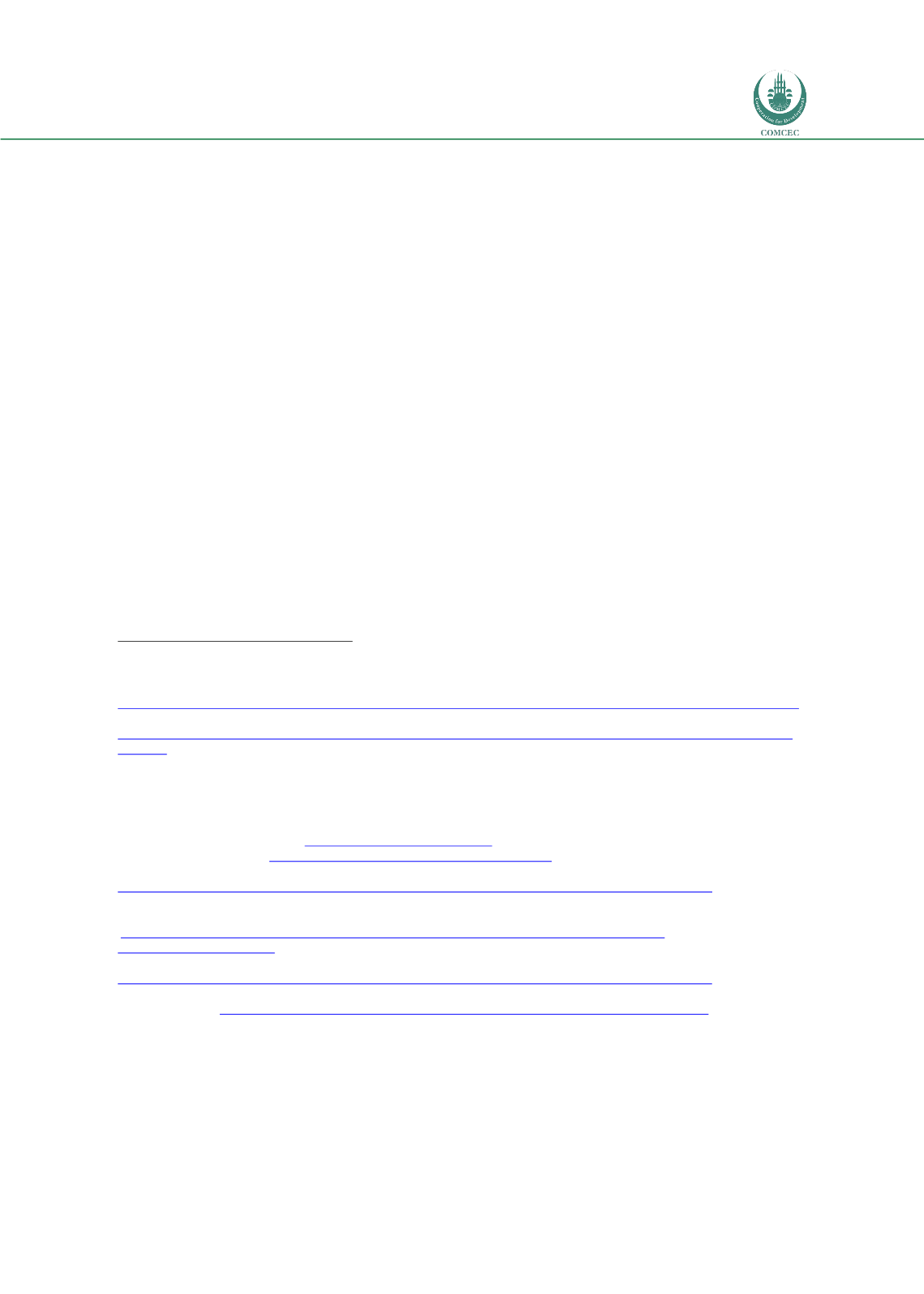

Forced Migration in the OIC Member Countries:
Policy Framework Adopted by Host Countries
63
Malaysia and Indonesia.
273
Flows along this route have rapidly decreased since the enactment
of Australia’s Operation Sovereign Borders policy.
274
Under this controversial policy, migrants
who travel by boat to Australia after January 1, 2014 cannot receive a visa, the boats of asylum
seekers who are intercepted trying to reach Australia are turned back, and those who reach
Australian soil are sent to offshore processing centers in Nauru and Papua New Guinea, where
they remain even if deemed to be refugees.
275
However, some migrants continue to board
boats along the southern edge of Indonesia headed for the Australian territories of Christmas
Island or Ashmore and Cartier Islands.
276
The journey from the southern coast of Java to
Christmas Island is estimated to take about three days in favorable conditions, but often the
vessels are not so lucky and sink due to stormy weather.
277
For refugees and asylum seekers in Africa, South Africa has been a traditional destination
country due to its relative stability, perceived economic opportunities, and strong rights for
migrants.
278
Between 2006 and 2012, South Africa hosted more asylum seekers than any
other country in the world.
279
While many refugees and asylum seekers in South Africa come
from Central African states such as the Democratic Republic of the Congo and Burundi, there
are smaller refugee and asylum seeker populations from OIC countries in Africa and beyond.
In 2015 South Africa hosted 45,747 forced migrants from Somalia, 10,795 from Nigeria,
10,443 from Bangladesh, and 8,350 from Pakistan.
280
The majority of southward migrants
from Somalia and the Horn of Africa use Kenya, Malawi, Mozambique, Tanzania, Zambia, and
Zimbabwe as transit countries.
281
Some forced migrants from OIC countries also travel to North and South America.
282
In the
U.S., these asylum seekers may travel to the US to apply for asylum upon arrival, or may
273
UNODC,
Migrant Smuggling in Asia
, 68.
274
Agence France-Presse, “Australia hails 600 days of no asylum seeker boat arrivals,”
South China Morning Post
, updated
March 25, 2016,
http://www.scmp.com/news/asia/australasia/article/1926410/australia-hails-600-days-no-asylum-seeker-boat-arrivals ;The University of Queensland, “Statistics relating to Migrant Smuggling in Australia,” accessed July 15, 2016,
https://law.uq.edu.au/research/our-research/migrant-smuggling-working-group/statistics-relating-migrant-smuggling- australia .275
The Australian government estimates that there are approximately 30,500 people in Australia who arrived illegally by
boat before January 1, 2014, who are invited to apply for a protection visa. Recently, the use of offshore processing centers
has come under renewed scrutiny after Papua New Guinea’s Supreme Court deemed the detention center on Manus Island
to be illegal. The center has since been slated to close, though Australia has maintained that it will not settle any of the
asylum seekers residing there. Australian Government Department of Immigration and Border Protection, “Illegal maritime
arrivals,” accessed June 9, 2016
, http://www.ima.border.gov.au/;BBC News, “Australia asylum: Why is it controversial?,”
updated April 29, 2016,
http://www.bbc.com/news/world-asia-28189608 .Brett Cole, “Australia Will Close Detention
Center on Manus Island, but Still Won’t Accept Asylum Seekers,”
The New York Times
, August 17, 2016,
http://www.nytimes.com/2016/08/18/world/australia/manus-detention-center-papua-new-guinea.html .276
UNODC,
Migrant Smuggling in Asia,
67.
277
Luke Mogelson, “The Dream Boat,”
The New York Times Magazine
, November 15, 2013,
http://www.nytimes.com/2013/11/17/magazine/the-impossible-refugee-boat-lift-to-christmas- island.html?pagewanted=all .278
OCHA,
Humanitarian Bulletin: Southern Africa (Issue 13)
, (Geneva: OCHA, January 2014), 1,
http://reliefweb.int/sites/reliefweb.int/files/resources/OCHA_ROSA_Humanitarian_Bulletin_Jan_2014.pdf .279
Elizabeth Iams Wellman and Loren B. Landau, “South Africa’s tough Lessons on Migrant Policy,”
Foreign Policy
, updated
October 13, 2015
, http://foreignpolicy.com/2015/10/13/south-africas-tough-lessons-on-migrant-policy/280
UNHCR, “Population Statistics”
281
OCHA,
Humanitarian Bulletin: Southern Africa (Issue 13),
1.
282
While the majority of OIC migrants travel by air to North and South America, it should be noted that many asylum
seekers enter the United States through its southern border with Mexico. The majority of these asylum seekers are from
Central America, but reports have indicated that some African and Middle Eastern migrants (including asylum seekers from
OIC member countries such as Somalia and Syria) have sought entry to the U.S. by flying to South America and travelling to
the southern border—often via Colombia, due to its strategic geographic position and the abundance of trafficking networks
in the country. Sibylla Brodzinsky and Nina Lakhani, “Global refugees take long detours through Latin America to reach the
US,”
The Guardian
, November 24, 2015,
















